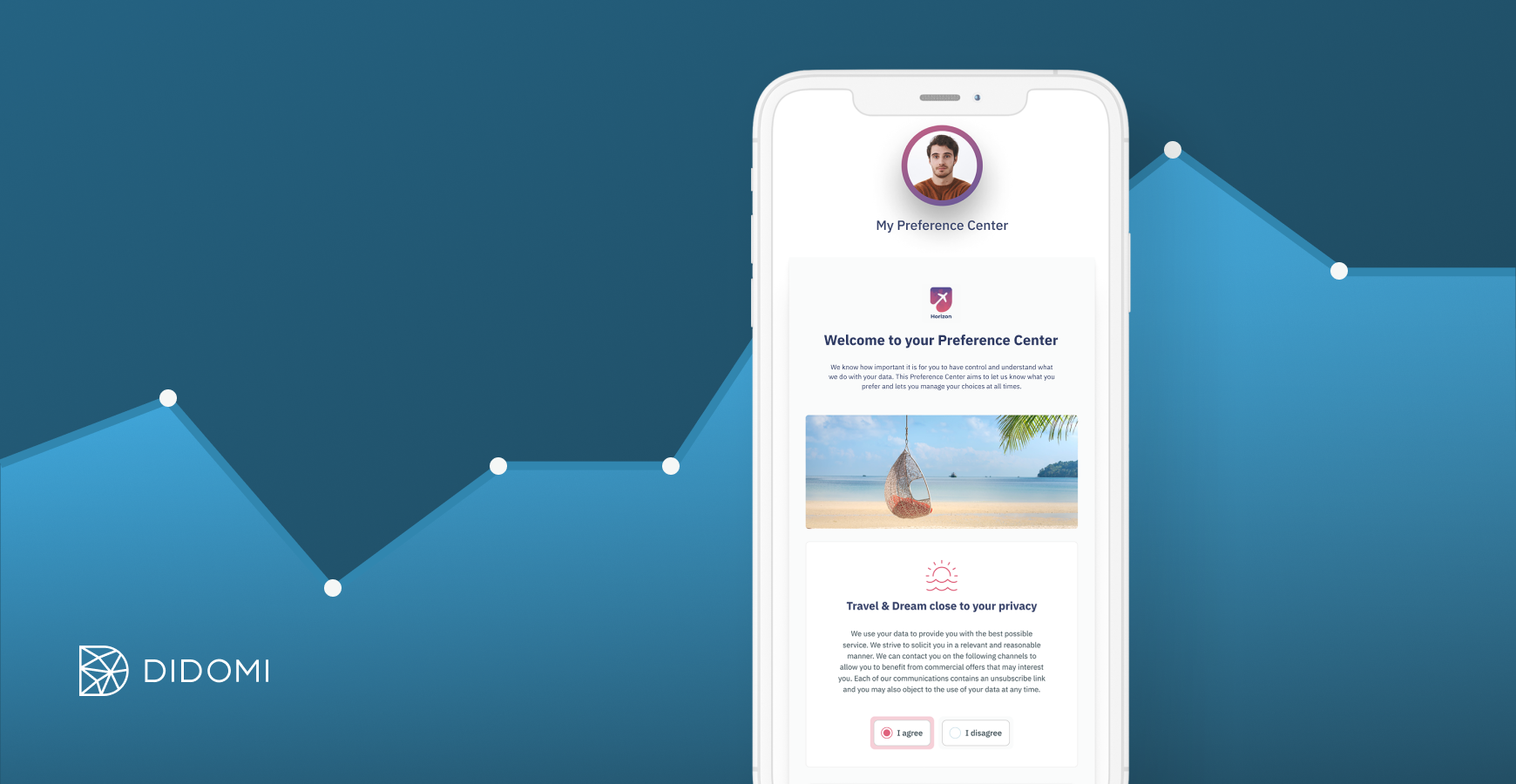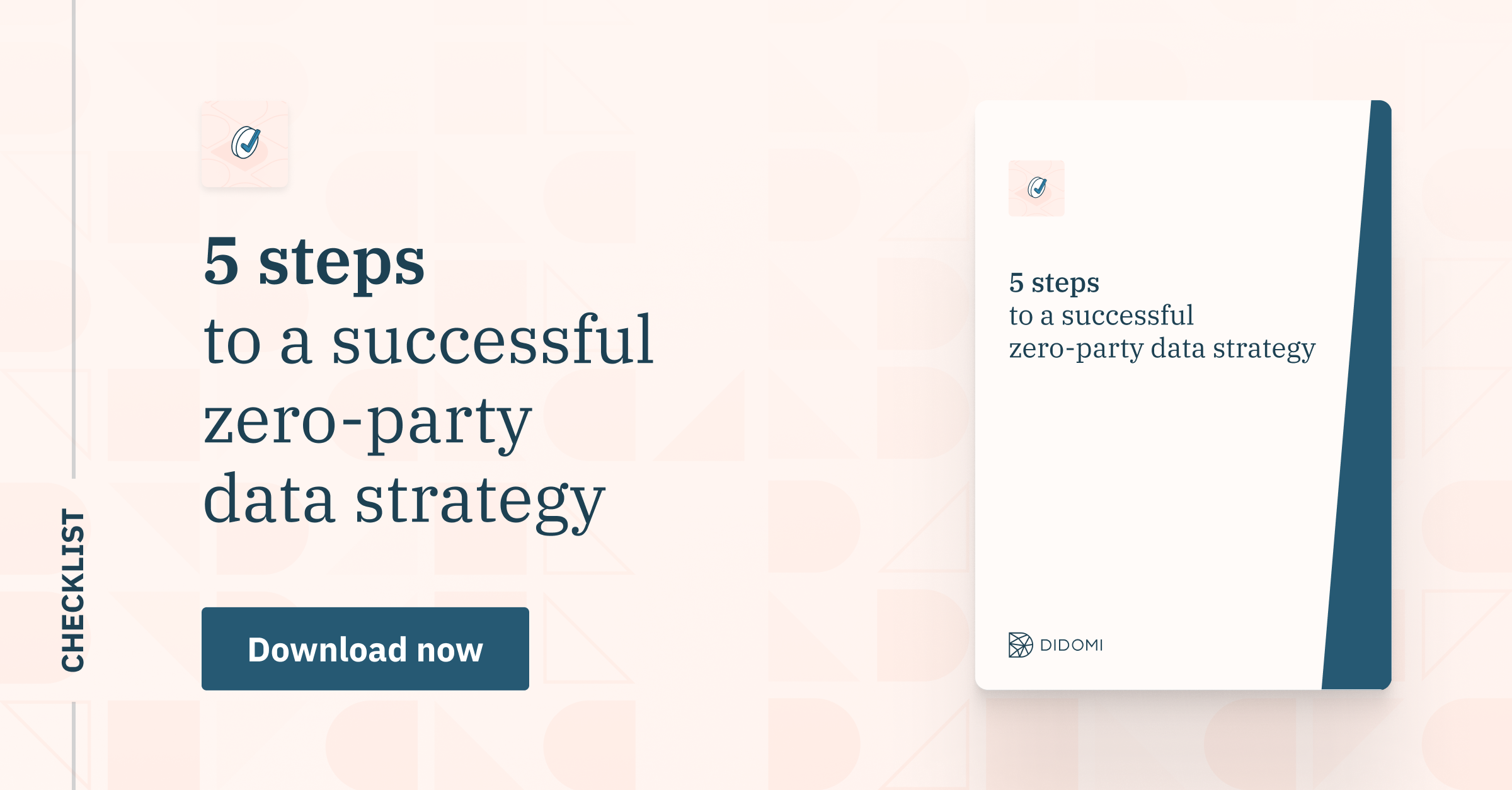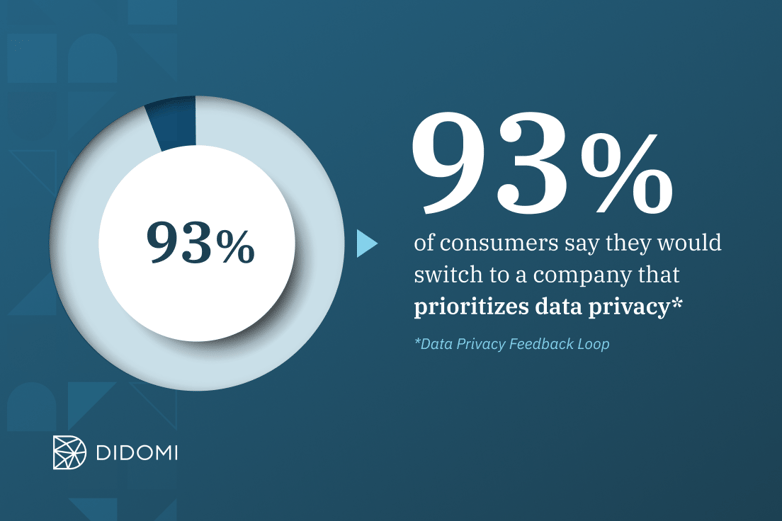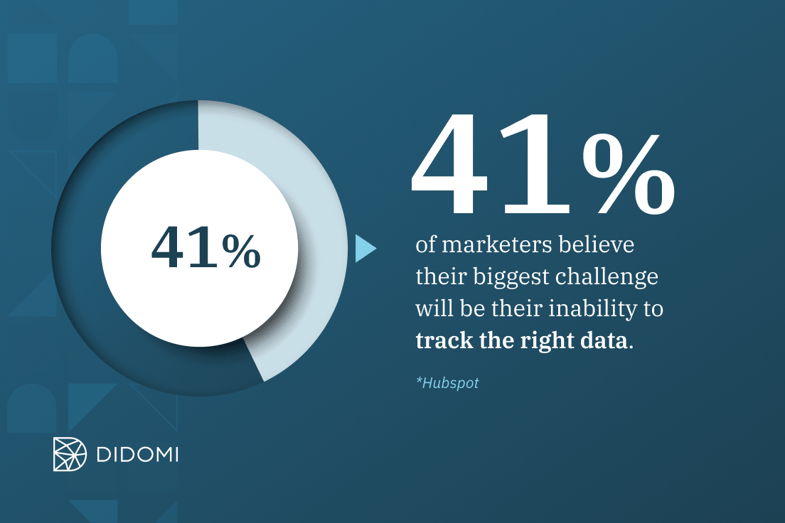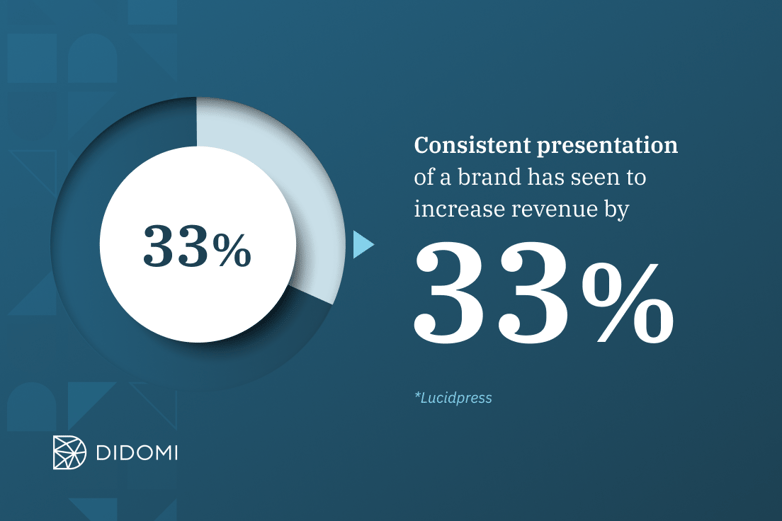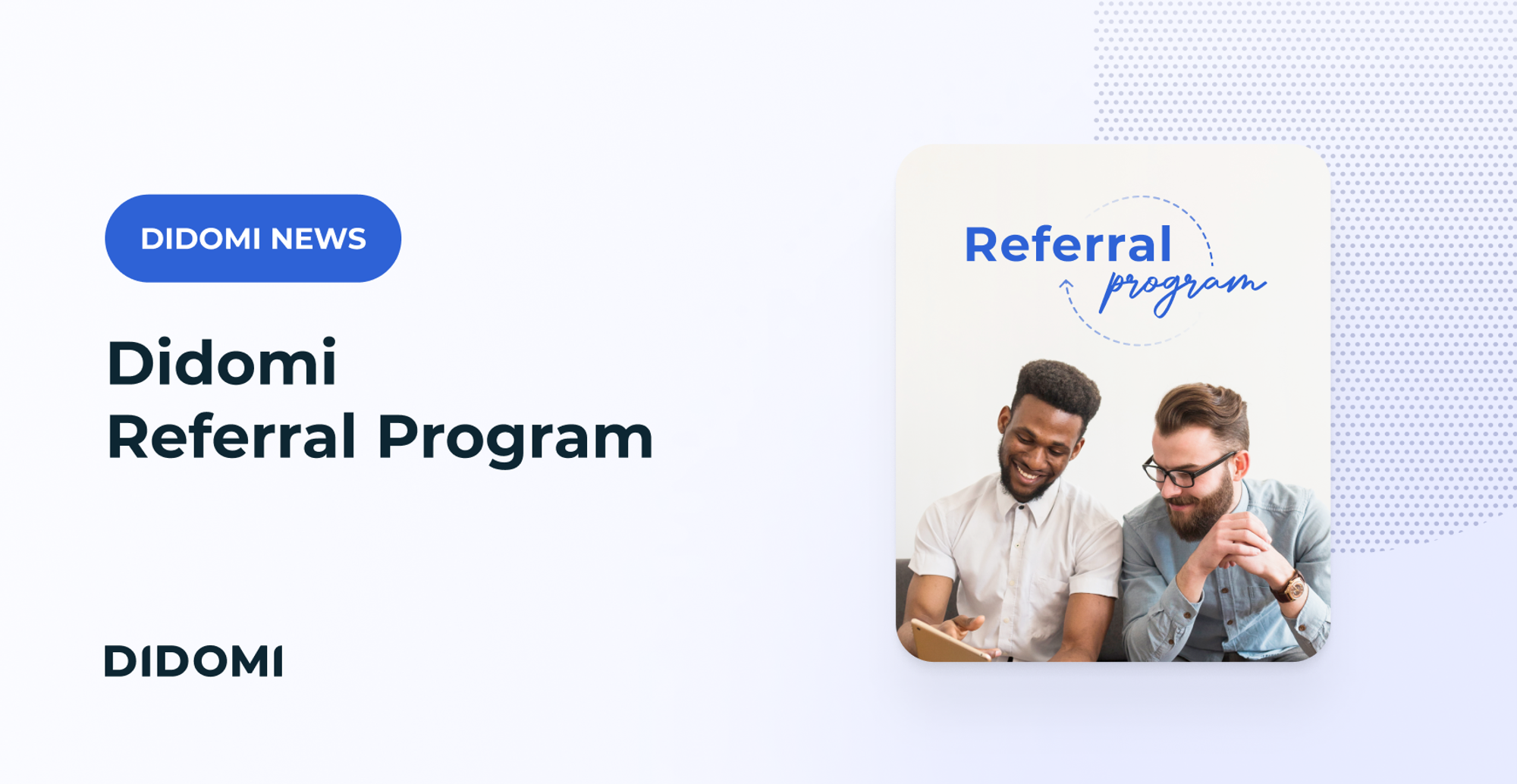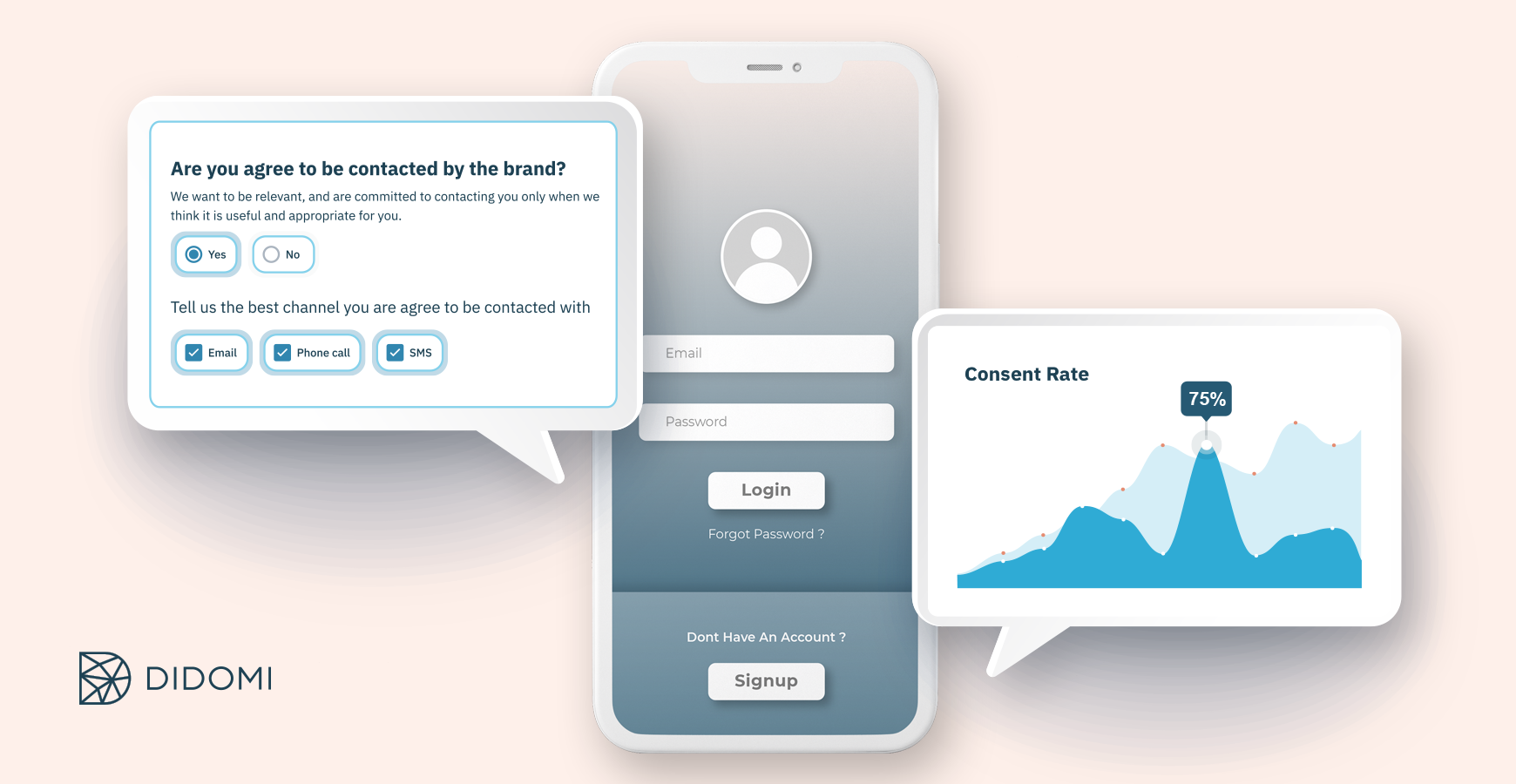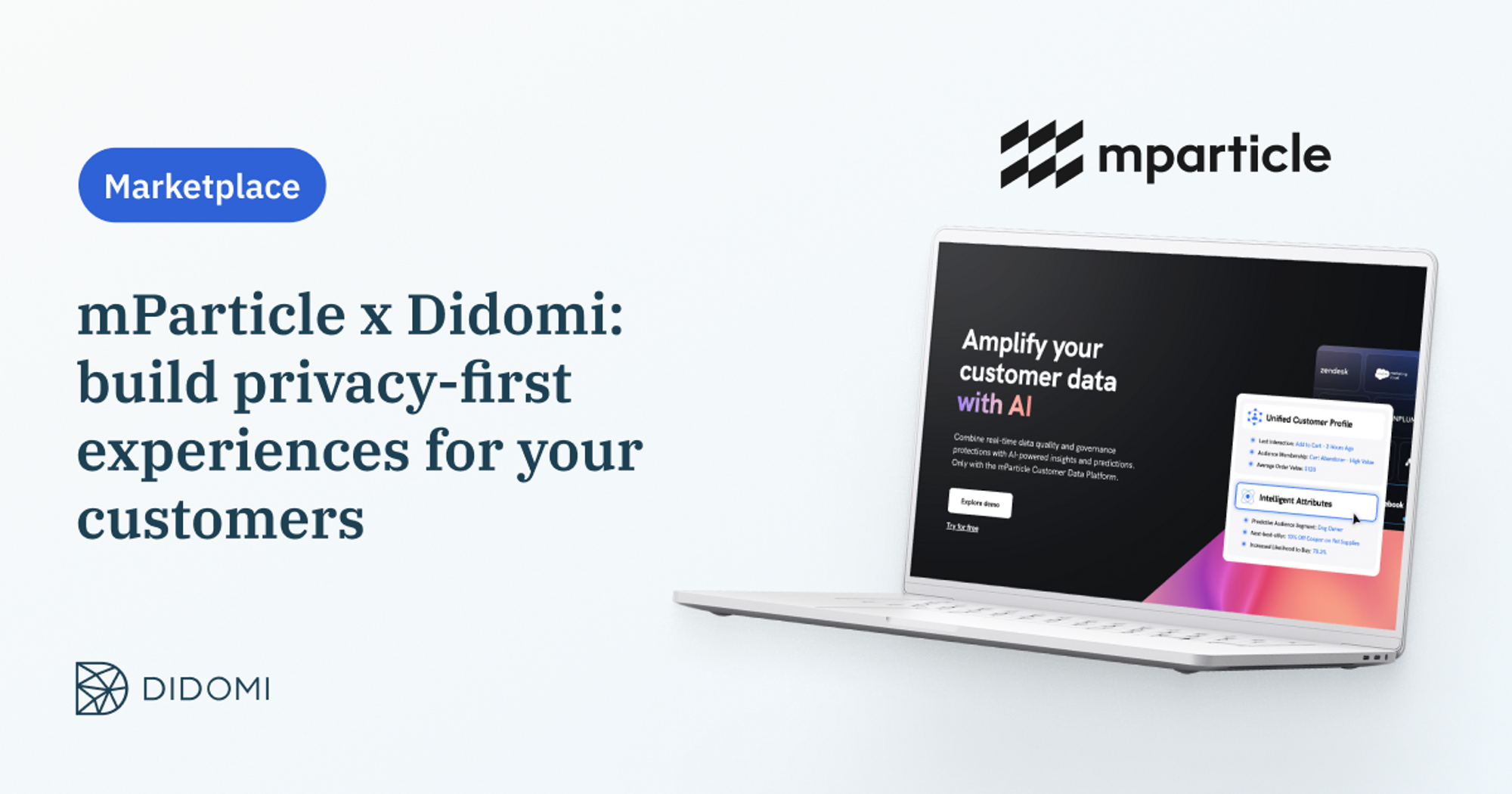Your customers want more control over their data. After a string of privacy breaches and data scandals, innocent until proven guilty has become guilty until proven innocent when it comes to consumer sentiment on enterprise data policies.
It’s time for a citizen-led data industry. After a decade of “Big Data” strategy, it’s time to reverse our way of thinking. Preference management will prove pivotal in the future of data collection. Companies who use preference management as the bedrock of their customer data strategy stand to increase user trust and boost sales. Companies who do not stand to lose out: third-party data strategies are skating on thin ice in the current digital ecosystem.
The Didomi Preference Management Platform allows companies to empower their users by giving them control over their personal data. This, in turn, allows them to build trust and deliver experiences based on customer preferences: targeted, personalized experiences that will boost customer loyalty and revenue.
Carry on reading for a deep dive into how successful preference management can transform the relationship between brand and client, optimizing customer experience and boosting business metrics.
Summary:
-
Increase customer engagement by displaying personalized content
-
The Preference Management Platform as a transparency tool for customers
-
Streamline customer preferences via offline-online integration
-
Enter a new era of data collection with the Didomi Preference Management Platform
What is customer preference management?
Customer preference management means putting user choice at the forefront of the way your company collects personal data. It means adopting a method of “Just Ask”.
Preference management will prove pivotal in the future of data collection. Why? Here’s a quick overview.
A brief history of data collection
Around 2010, marketers started collecting data frantically, without identifying how much of it really made sense.
Data-driven marketing was seductive, and successful. The arrival of Big Data solutions reinforced interest in mass data collection, often without properly considering its limits.
As the saying goes, “data was the new oil”. This was particularly true for marketing departments, who set to work analyzing and personalizing every minute detail of the customer journey. Collecting data cost nothing, and could generate tremendous marketing campaign revenue.
That was in 2010. Now, times are changing, and fast. Companies will have to adapt. Why? This can be broken down into 3 main reasons.
Reason 1: The General Data Protection Regulation (GDPR)
The 2018 GDPR acted as a watershed moment for the digital ecosystem. The very first of its kind, this data legislation aimed to protect personal data rights reserved for European citizens.
This landmark law spearheaded a movement. Gartner now predicts that, before year-end 2023, more than 80% of companies worldwide will be facing at least one privacy-focused data protection regulation.
In a regulated landscape, Big Data faces challenges.
Reason 2: The Cookieless future
It’s the end of the road for third-party cookies. Following Apple, Safari & Mozilla Firefox, Google announced it would stop supporting third-party cookies on its Chrome browser in 2023. Given that over 85% of online browsing is carried out on these platforms, significant change is imminent.
With the death of third-party cookies, companies will have to leverage zero and first-party data. The need to understand customer preferences signals the end of the Big Data strategies of the 2010s.
Reason 3: Consumers care about how their data is used
This third and final reason should not be underestimated. Put simply, consumers care about the way companies treat their data. They care about data transparency.
In fact, recent European-wide research has shown that around two-thirds of consumers modify their purchasing decisions in line with supplier privacy commitments.
Will we look back on the years of data-driven marketing as the Golden Age of marketing? No.
Why? Because, despite this new wealth of information, marketers were missing one fundamental element. User trust.
If consumers don’t trust you, they won’t engage with your company. They won’t buy from you. This is why understanding customer preferences is crucial for brands.
Benefits of preference management
The value of data is not up for debate. Data is crucial for any marketing strategy. However, trust will be pivotal in the data strategies of the future. If your users don’t trust you, they won’t share their data with you.
The future of data collection lies in the method of “Just Ask”, asking your users their preferences in data sharing. It’s about data quality, not data quantity.
It lies in zero-party and first-party data that customers have consented to giving. It lies in collecting less data, but better data. It lies in using this data to improve customer service and build a relationship of trust, a trust that works both ways. If companies place their trust in the user by adopting transparent data practices, the consumer will trust the company.
For more information on how to implement a successful zero-party data strategy, download our whitepaper by clicking on the image below.
Put simply, the future of data collection lies in preference management.
Advantages to the customer
Good preference management puts users in the driving seat of how they interact with a company: both the data they wish to share and the communication they wish to receive.
Consumers are more concerned than ever about what is done with their data. Privacy is a fundamental human right, and it feels good to have your rights reserved and respected.
It feels even better when brands exceed customer service expectations, allowing the person to define their UX, their relationship with a brand and the personal data they wish to share.
In the current digital ecosystem, customer loyalty and new customer acquisition will be closely associated with company data practices.
Advantages to the business
Good preference management is a way to future-proof your company and stand apart from competitors.
Companies often try to drop cookies on people's devices in a clandestine way, under the guise of "legitimate interest". This has led to mistrust and now consumers state that they rarely (15%) or only sometimes (31%) accept cookies and marketing emails.
Ask your customers how they like to be contacted, what their preferences are in terms of data sharing. Extend the olive branch of transparency, and reap the rewards of higher marketing engagement and happier prospects.
Put simply, reap the rewards of the relationship of trust you will have fostered with your users. In doing so, enjoy more information about your customers that is relevant and actionable.
Preference management technology changes the game for consumers and companies alike. This is why the Didomi Preference Management Platform was born.
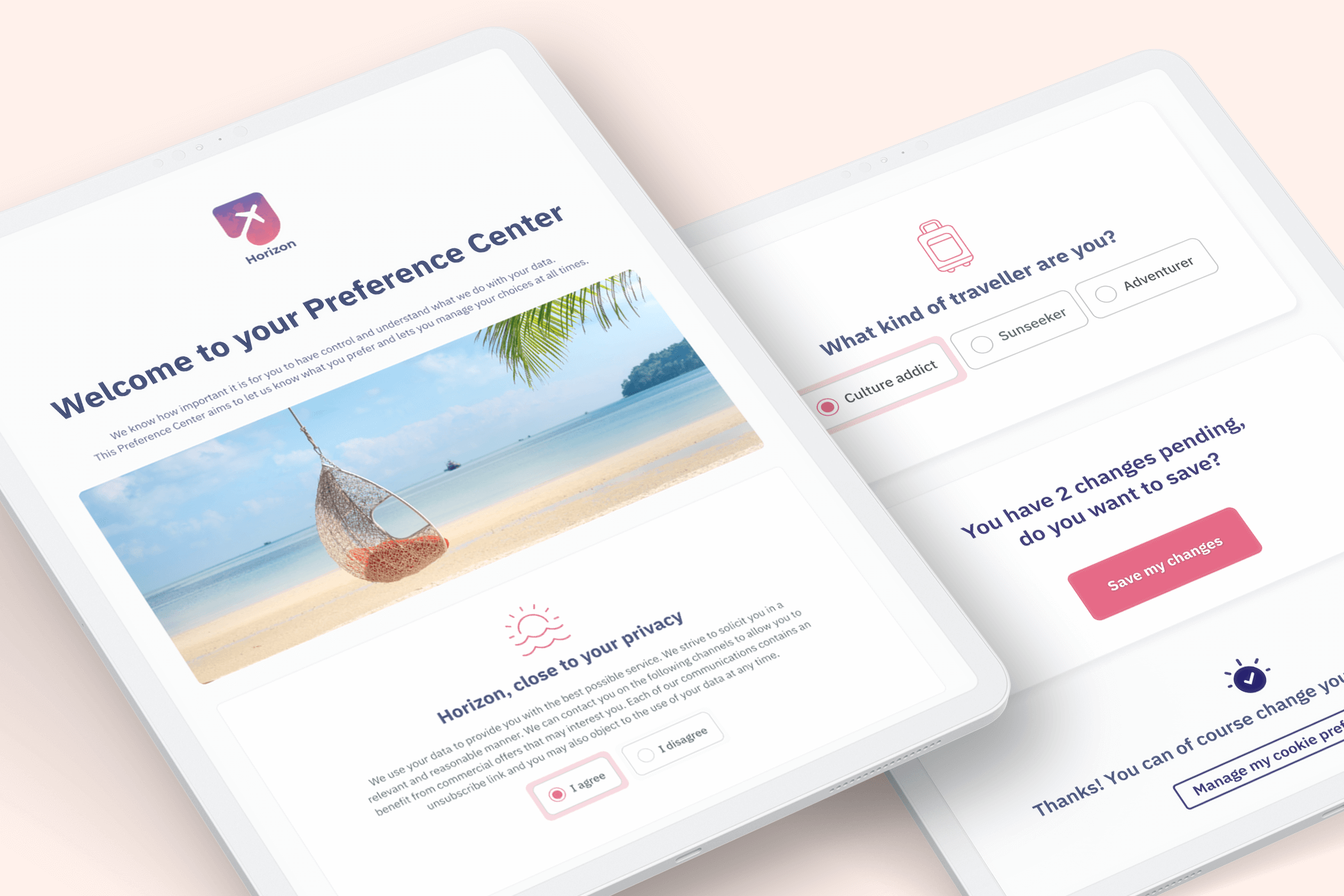
Increase customer engagement by displaying personalized content
A personalized experience is a better experience. Consumers and marketers may not often agree, but this is something they can agree on.
From a user perspective, 71% of consumers feel frustrated when a shopping experience is impersonal. Why would we be interested in a coffee loyalty scheme, if we prefer tea? Do we ever actually open the emails we receive from brands?
Each individual customer expects tailored communications, tailored experiences based on their personal preferences. And, investing in personalization pays off for brands.
Displaying personalized content at the right time to the right people will improve customer service, increase customer engagement, and boost propensity to purchase, or repeat purchase.
It’s a win-win situation.
But, with the impending doom of the “cookieless future”, marketers will have to rely on consented user data in order to deliver personalized communications to their audience.
|
“Displaying personalized content at the right time to the right people will improve customer service, increase customer engagement, and boost propensity to purchase, or repeat purchase.”
- Julien Djelouah, Head of Product at Didomi |
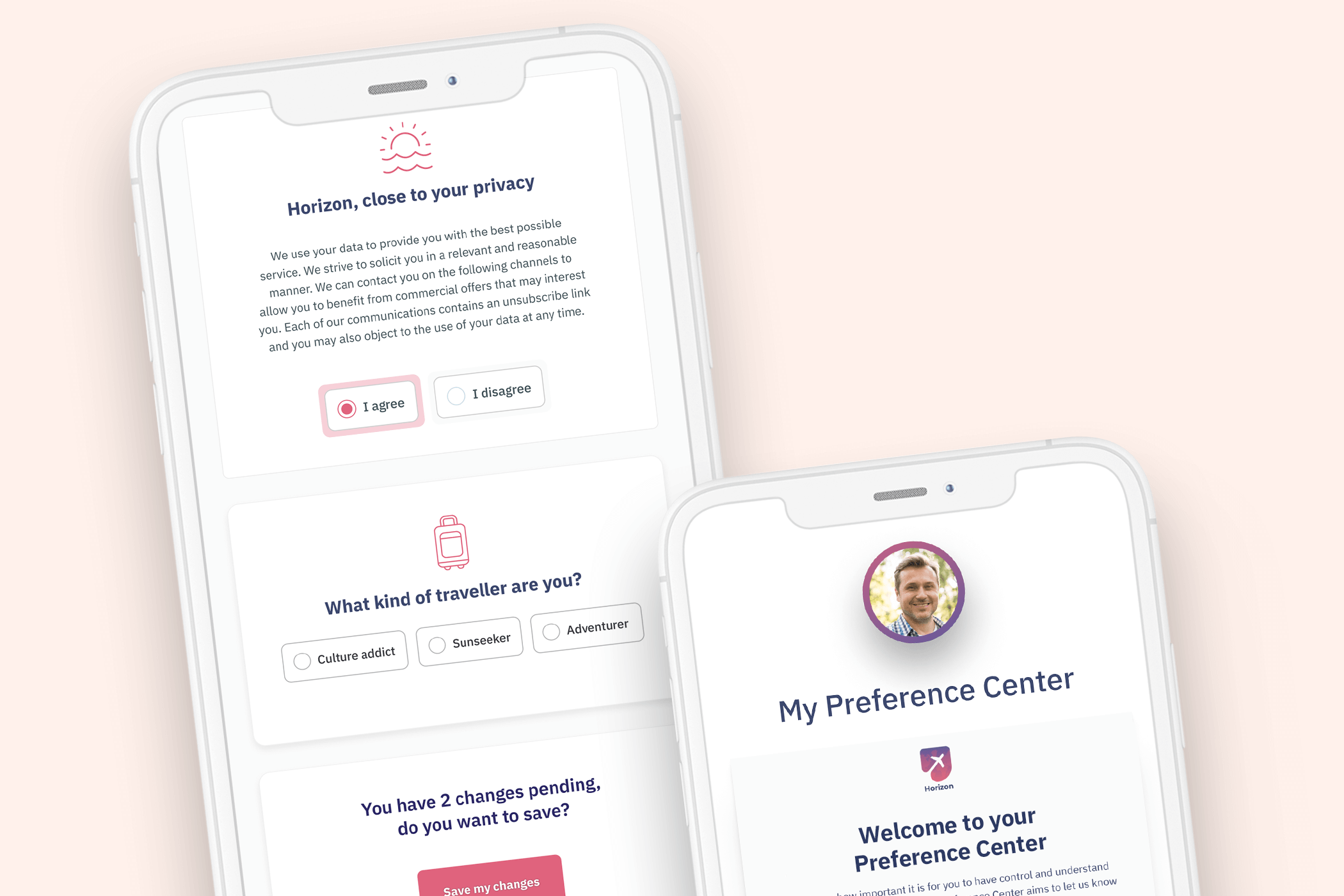
The Didomi Preference Management Platform: Increase revenue with targeted content
The Preference Management Platform (PMP) allows companies to identify customer likes and dislikes by letting them adjust and choose their preferences.
With the PMP, companies are able to ask their customers their communication expectations, favorite topics and habits. These vital user insights are then used to engage customers through personalized content or custom user experiences.
The product is built around two main notions: the configuration and the widgets.
The configuration is the data model where you can define the purposes of the data processing to ensure GDPR compliance and the users' preferences you want to collect. This data model is used to guarantee the quality and consistency of data gathered through several widgets at all times.
The widgets are the forms you expose to your users to let them tell you their preferences.
Present your customers with personalization options, and they’ll repay you with their engagement, loyalty and repeat purchases.
Preference Management Platform as a transparency tool for customers
Do consumers trust the way their data is collected? No, 84% of consumers say they want more control over how their data is being used.
It’s time to reverse this tendency, and opt for a citizen-led data industry. In a digital world, users will not trust companies who do not respect their data rights, or privacy.
And, forging user trust is a win-win situation for companies too, from an economic perspective.
Adopting a “privacy-first” business model will deliver a measurable return, not just in customer service, reputation protection and avoidance of fines, but also in increased sales and profit.
If companies commit to safeguarding data beyond the minimum which is required by the law, adopting transparent data practices, they will find that consumers will be happier and more engaged. This will be directly visible in revenue.
It’s a capitalist approach, but it’s the truth: Good privacy sells, bad privacy repels. So, it’s time to adopt a privacy-first tech stack.
|
“Today our society is experiencing a true trust crisis, companies need to be able to collect user preferences early enough to provide personalized experiences online and offline & ultimately gain back customer’s trust.”
- Antonio Anguiano, VP Product at Didomi |
The Didomi Preference Management Platform: Build user trust with a transparent privacy interface
The relationship between privacy and trust is a two-way street. If businesses prove themselves to be trustworthy through transparent privacy interfaces, users are more likely to trust the company and thus engage more, giving more data on their personal preferences.
The Didomi Preference Management Platform puts customers in control of their data, allowing for successful consumer preference management that builds user trust.
Through a user-friendly interface, customers can autonomously modify their preferences at any time. Our log-in environment (through email address) allows for fluid UX.
With the PMP, users are trusted with more than a simple opt-in vs opt-out dichotomy. They are at liberty to personalize their preferences (communication channels, topics of interest, habits, etc.), to fill out the form as they see fit.
As such, they are less likely to opt-out, and more likely to give crucial insights into their preferences: invaluable data for successful company marketing campaigns. Then, they’re more likely to interact with the targeted, personalized content they receive, as they’ll be tailor-made to suit their interests.
If they’re not satisfied, they simply change their preferences again. It’s a seamless process. And it makes for a smarter, more trustworthy relationship between company and end-user.
Centralize customer data & synchronize with 3rd party tools
It’s all very well collecting invaluable data on customer preferences. It’s also all very well using this data to deliver targeted content and experiences, thus boosting revenue.
But, this crucial data is worthless if it does not sync with the 3rd party tools employed to use it.
A minor data synchronization glitch or error can have a significant impact on sales, decision-making and customer retention. Manually implementing user choice collection data to share it through their tools is time consuming, and labor intensive.
That’s why data synchronization is vital. Preferences data needs to connect with multiple CRM and marketing automation tools in order to provide actionable insights and performance metrics.
|
“Autonomy is highly important to our clients. Being able to set up and customize a Didomi Preference Center easily without a developer is a fundamental advantage to this product.”
- Jawad Stouli, CTO at Didomi |
The Didomi Preference Management Platform: Seamless integration with Hubspot, Selligent, Adobe Campaign & more
With Didomi’s Marketplace, businesses can easily see the integrations offered by Didomi, in order to quickly and efficiently send user preference data to third party tools.
Not only are businesses able to map Didomi data with data that is not related to Didomi in their systems, they are also able to integrate this data within business tools, such as CRM and marketing automation technologies.
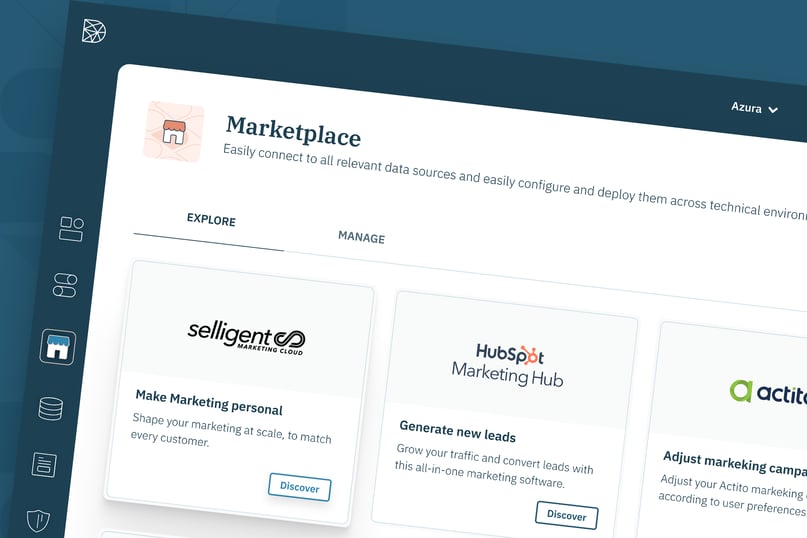
Companies can connect to the Didomi Marketplace with integrations such as:
-
Hubspot
-
Selligent
-
Adobe Campaign
-
Actito
Thanks to Didomi, companies are able to maintain accurate customer preferences and consent details across all CRM and marketing systems.
|
“Didomi offers you a fast and simple way to synchronise preferences through various platforms with minimal effort, so you can leverage consent through your technological ecosystem.”
- Product Manager at Didomi |
The Preference Management Platform as a brand experience
Data privacy and consumer preferences don’t have to be boring. They also don’t have to be incomprehensible, buried away, for example, in 35 page long terms and conditions.
Rather, turn preference management into a brand experience. Why not align your brand identity with your privacy interface? Turn a privacy-first focus into a branded customer experience to highlight transparency and win trust.
|
“Marketers spend countless hours fine tuning their website and personalizing their communication to drive growth and ensure a consistent brand image. But, they often forget to pay attention to their privacy interfaces.” - Yannig Roth, VP Marketing at Didomi |
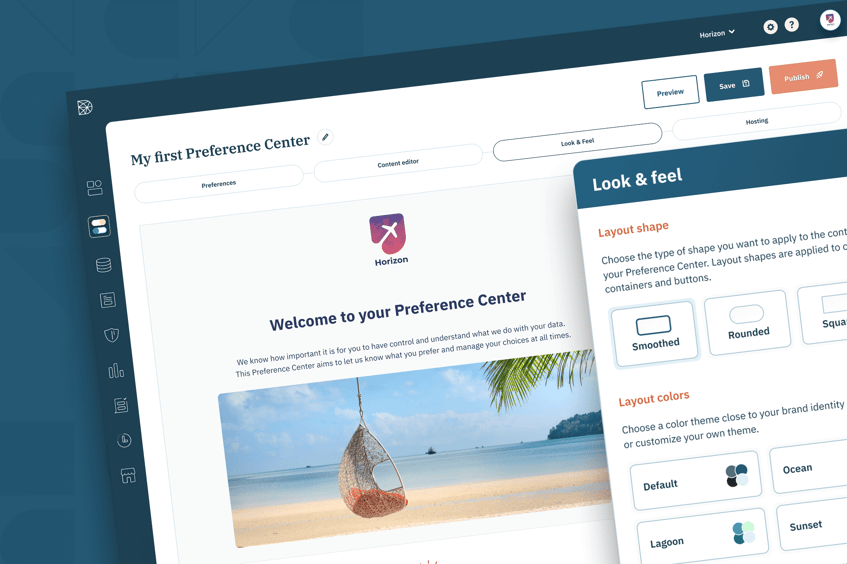
The Didomi Preference Management Platform: A solution that fits with both business needs and design brand
At Didomi, we understand the importance of brand identity. Businesses spend countless hours fine tuning their website, their landing pages and their communication to ensure consistent design brand and tone of voice.
But, they often forget, or dismiss, paying attention to their privacy interface.
Preference management is a fundamental keystone to user experience. So, it’s important to ensure that this interface respects company brand guidelines and contributes to brand experience.
The Didomi Preference Management Platform product features allow for easy, flexible configuration to suit the clients’ brand needs.
With the PMP, companies are able to add their own domain, color schemes and logo. They are able to adapt the text of the interface to align with the brand tone of voice and audience. The content (title, description, label of purposes and preferences) is all editable.
Easy widget creation allows for full flexibility and customization.
Customers care about how their data is used. Businesses should use their preference management interface to showcase their brand values and brand voice. This improves customer satisfaction and gives the brand something to be remembered for.
Streamline customer preferences via offline-online integration
So far, the benefits of good preference management have been digital. But what happens if your company operates both physically (on the shop floor) and digitally (on an e-commerce website)? 81% of companies collect behavioral customer data (both on- and offline).
If you want to ensure a smooth experience and increase customer satisfaction, you need a consent architecture that can seamlessly integrate the two.
The Didomi Preference Management Platform: Double opt-in consent to streamline online & offline experience
With the Didomi Preference Management Platform, if a customer walks into a store and decides to sign-up to receive communication from the brand, for example, they can either consent directly on a tactile device provided by the salesperson employees (simple opt-in), or ask to receive an email allowing them to authenticate and update their consents in a dedicated Preference Center (double opt-in).
At any time, registered customers will have access to this consent and preference management interface, allowing them to update their communication preferences on any device.
Consumers will always value a merchant’s exemplary practices. By providing a seamless online and offline experience, you are being transparent with users along the entire funnel and across all touchpoints, and this drives both trust and loyalty for your brand.
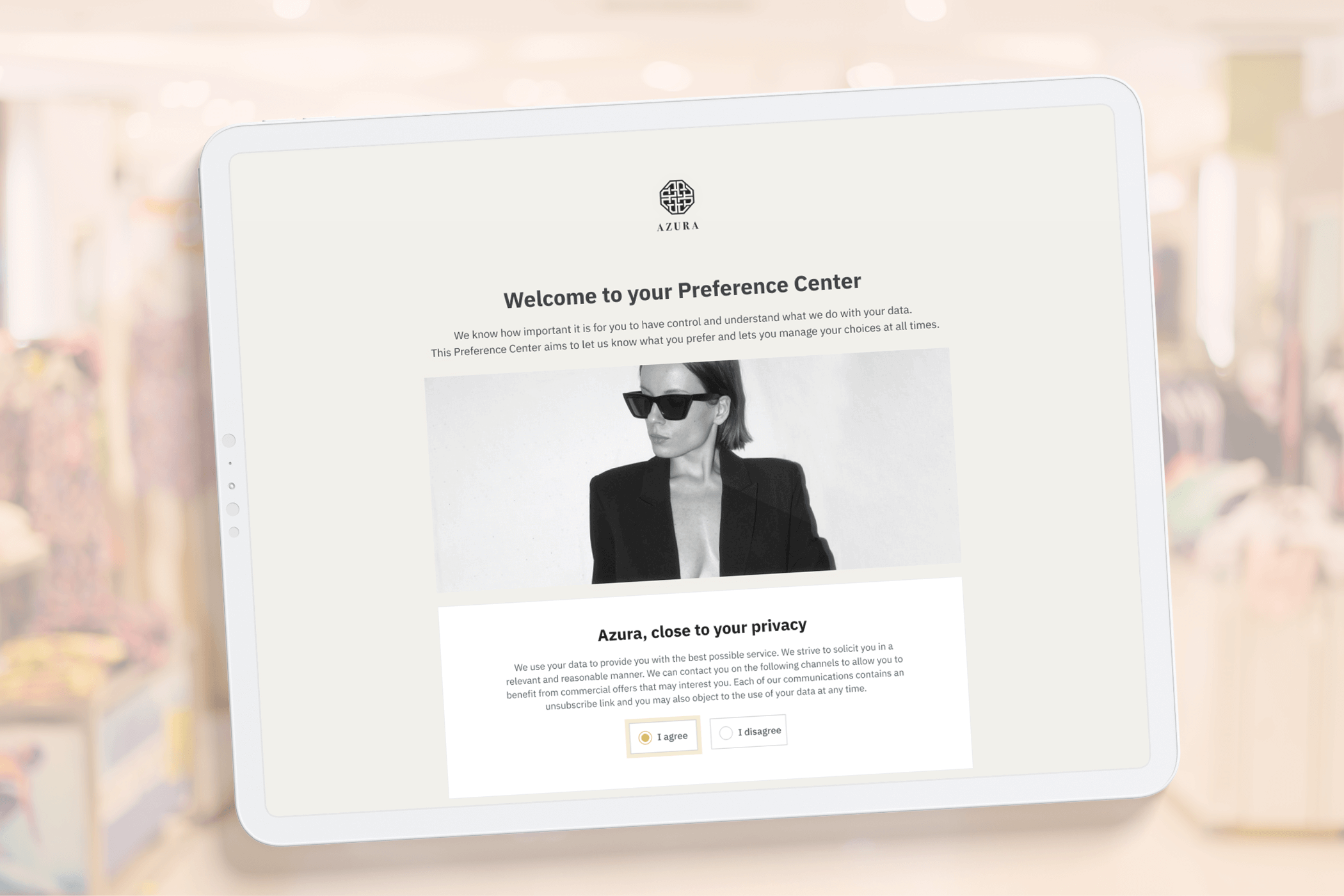
Enter a new era of data collection with the Didomi Preference Management Platform
With preference management technology, marketers don't need to estimate or guess what customers want, nor do they need to rely on third-party data strategy that will soon be a thing of the past.
Rather, they can just ask their users directly, understanding exactly what each individual customer wants. Then, they can rely on that data to build better marketing and advertising.
|
“Present your customers with granular and comprehensive personalization options, and they’ll repay you with their engagement, loyalty and repeat purchases.”
- Raphael Boukris, CRO and Co-founder at Didomi |
A dichotomous one-click subscribe vs unsubscribe option limits your ability to communicate with customers, to know what they really want. Present your customers with data preferences options and they’ll repay you with their engagement and loyalty.
Didomi PMP product features allow brands to create a relationship of trust, by putting consumers in the driving seat of how their personal data is used. Companies can then reach their customers on the right channel, at the right time, with the right content, reducing opt-out, increasing engagement and, ultimately, revenue.
The PMP allows companies to deliver new digital experiences based on user preferences. This redefines the relationship between brand and customer, by placing trust at the heart of interactions. This will attract new customers and boost customer loyalty. In doing so, the PMP is a tool that will define the future of successful data collection.
For more information, check out our technical documentation or book a call with us.



